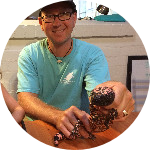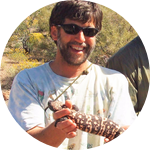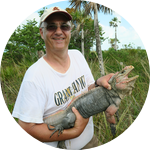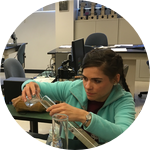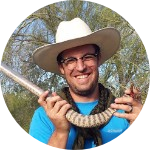About This Project
The Gila monster, with its distinctive black and orange pattern, is one of Arizona’s most iconic animals. A peptide from its saliva has inspired treatments for diabetes, but Gila monsters are currently threatened by habitat destruction and poaching. Surprisingly there is no Gila monster genome. By sequencing and analyzing Gila monster DNA, we will contribute critical knowledge and resources for the study of Gila monster venom in medical genetics and for their conservation.
Ask the Scientists
Join The DiscussionWhat is the context of this research?
I've studied mammalian genomes for the last 11 years. When I started at Arizona State University my lab was set up next to Dale DeNardo (collaborator) who has studied Gila monsters for much of his career. I quickly realized these creatures are incredible, and I was shocked that we didn't know more about their genetics. Synthetic forms of exendin-4, a peptide from Gila monster saliva which might be a component of their venom, are now being used successfully for treating Type II diabetes. But, in all the excitement about the drug, we don't know the Gila monster genome sequence, how this salivary protein changes across species, or how much genetic diversity Gila monsters have in the wild (and whether we should be more actively conserving them). Thus, our push into Gila monster genomics!
What is the significance of this project?
The next closest related species to the Gila monster with a genome is the anole lizard. With this we can learn about genes shared between Gila monsters and anoles, but not DNA unique to the Gila monster. There is so much variation (between individuals, between sexes, and within the species) in Gila monsters that we know nothing about. By analyzing one individual in depth to make a scaffold reference genome, and several individuals to quantify variation, we will build a body of knowledge about Gila monsters that is currently completely undocumented. With the results of this project we can generate markers for conservation research, investigate Gila monster population history, and investigate what makes its saliva so unique and useful for treating Type-II diabetes.
What are the goals of the project?
We will generate high quality reference genome scaffolds from a single individual that can be aligned with other available reptile genomes. Using this alignment we will investigate the evolution of genes in Gila monster venom. We will also generate DNA sequences from three male and three female Gila monsters that we will use to identify sex-linked regions and characterize genetic variation across Gila monsters. We will write up each of these analyses for publication in open-access journals, making the results and all code used to generate the results publicly available.
Budget
Experiment.com is an all-or-nothing platform, so we're going to work in small pieces. Our initial goal is to raise funds to generate two essential pieces of a larger project with the goal of characterizing the Gila monster genome.
First Goal (FUNDS RAISED): (A) Sequence one reference individual (two lanes of sequencing with different library sizes) as the first steps toward building the reference genome. (B) Sequence DNA from three male and three female Gila monsters to allow us to investigate genetic variation among individuals, and to characterize their sex chromosomes.
Second Goal: Sequence RNA from three males and three females to investigate sex-biased gene expression.
Endorsed by
Meet the Team
Affiliates
Affiliates
Affiliates
Team Bio
We are a group of Gila monster enthusiasts! Dr. Melissa Wilson Sayres and Dr. Dale DeNardo, along with their lab members, are thrilled to be collaborating on the Gila Monster genome. This project involves undergraduate, graduate, and postdoctoral trainees in all stages of the research, including genomics analysis and interpretation.
Melissa Wilson
I am a computational and evolutionary biologist. Basically, I use computers to analyze large datasets to understand biological processes. Primarily I focus on investigating why mutation rates differ between males and females, what we can learn about the history of modern species by characterizing genetic variation across their genomes, and how sex chromosomes change through time.
Dale DeNardo
All my life I have been fascinated by Gila monsters, and for the last 16 years I have been fortunate enough to study their physiological ecology, adding considerably to our understanding of the biology of this species. I am excited about this opportunity to add a valuable tool to further study this icon of the American Southwest.
Shawn Rupp
I am a bioinformatician who studies the sex chromosomes of Squamate reptiles. I am primarily interested in understanding the evolutionary relationships of organisms, and I am also interested in applying what I learn to conservation biology.
Kimberly Olney
Biologist with experience in data analysis and laboratory procedures. Research interest in patterns of allele-specific expression across the human genome and studying sex biased expression.
George A Brusch IV
I am interested in how immune responses fluctuate in response to various stimuli from the environment.
Tim Webster
My research centers around evolutionary and population genomics. Essentially, I use signals in the genome to better understand the evolutionary and population histories of various organisms. I'm very excited to have the opportunity to work on the genome of one of my favorite species, the Gila monster. I have long been interested in the evolution and composition of Gila monster venom and also look forward to using information from this genome to try to disentangle evolutionary relationships among the various groups of lizards and snakes.
Pooja Narang
My research interests include understanding male mutation bias and understanding the evolution of sex chromosomes.
Sarah Brotman
Biological Sciences and Forensics double major.
Daniel Cotter
Biological Sciences Major
Ephrance Peninah Kalungi
Biomedical sciences major.
Valeria Valverde-Vesling
Biological Sciences (Genetics, Cell & Developmental Biology)
Undergraduate Researcher and IMSD Fellow
Additional Information
********************* Backer Rewards! *********************
We are offering backer rewards that we'll send independently of Experiment.com
$25 donation (unlimited): We will email you the full quality version of the Gila monster genome digital logo:
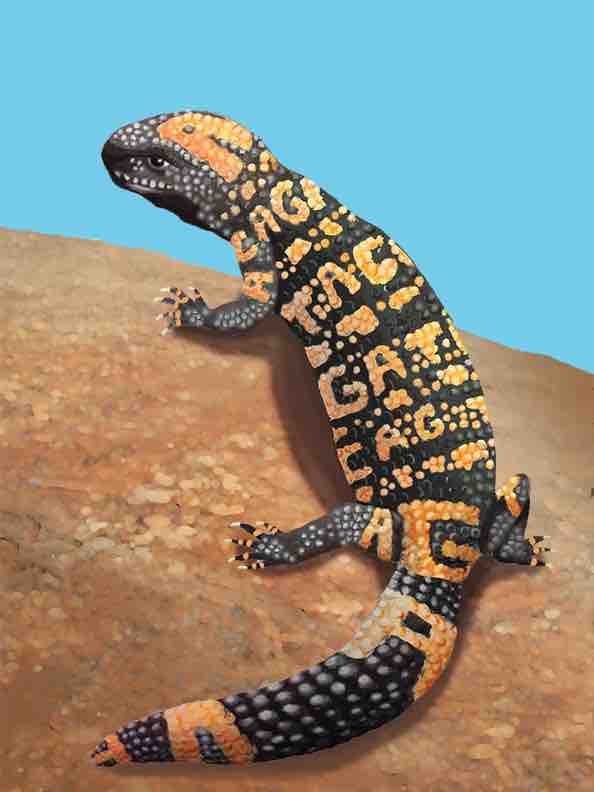
$100 donation (0 available of 10 signed copies - ALL GONE! ): A signed copy of Daniel D. Beck's book, Biology of Gila Monsters and Beaded Lizards.
******** Additional fascinating facts about the Gila monster ********
- There is no anti-venom for Gila monster bites.
- Gila monsters can eat up to 1/3 their body weight at one time and store fat in their tails.
- Gila monsters store water in the urinary bladder that they can reabsorb during times of drought.
- Gila monster habitats are being destroyed.
- Gila monster can have a 1-square mile range (1.6 square km), and typically do not survive if relocated.
- Gila monsters have sex chromosomes, but they are just the opposite of humans (female Gila monsters have one big sex chromosome and one small degraded one like typical human males).
Project Backers
- 173Backers
- 116%Funded
- $10,101Total Donations
- $58.39Average Donation

